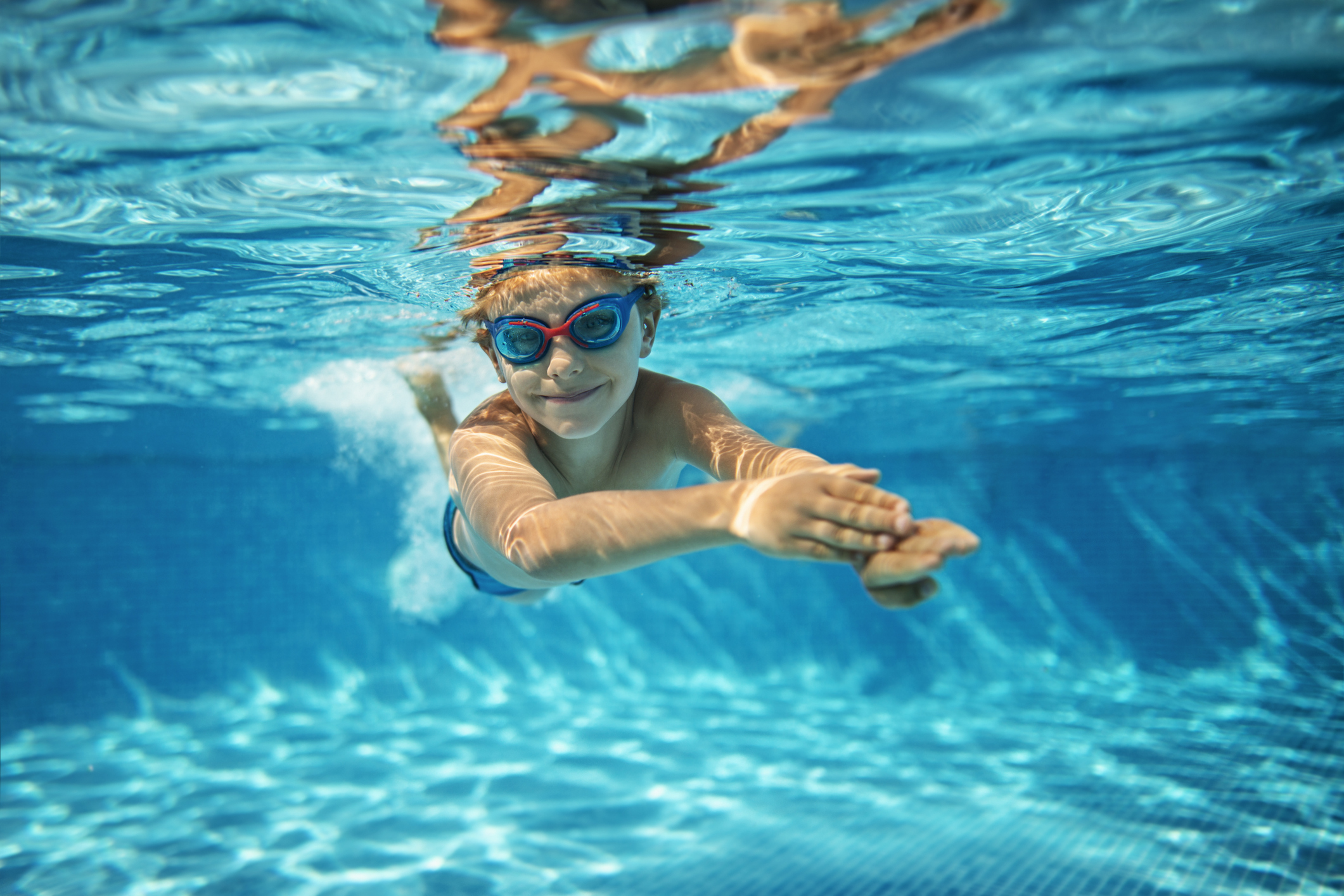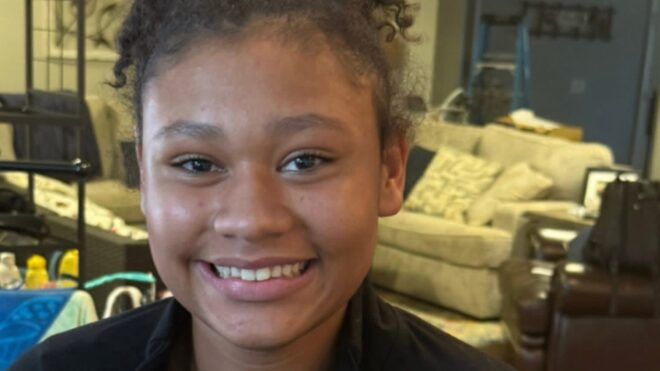
As the days get longer and the weather gets warmer, you may find yourself pulling out those toddler floaties from last year and stocking up on sunscreen. With plans of poolside parties or days on the lake comes the big question: At what age can a child swim independently?
Drowning is the single-leading cause of death in children ages 1 to 4, according to the American Academy of Pediatrics. For that reason, water safety is a high priority for many parents, and wondering when your child might be ready to swim on their own is a valid (and important) question.
The short answer to when a child can swim independently is this: It depends.
We’re diving into all the details to help you understand what to expect when it comes to your child swimming independently.
What does ‘swimming independently’ mean?
When people say a child can swim independently, they’re usually referring to the ability to stay afloat, move through the water with some basic stroke technique, and get to safety without assistance.
It doesn’t mean they’re ready for open-water triathlons, but it does mean they can handle themselves in a pool without floaties or a grown-up holding their hand (or waist). It also means that if they fall in accidentally, they have the skills to tread water, get to the wall, or float until help arrives. That’s a big deal.
Importantly, swimming independently also does not mean swimming unsupervised. All children – and adults! – should never swim unsupervised or alone.
Age isn’t everything, but it’s something.
Most children can start learning basic water skills as early as age 1, according to the American Academy of Pediatrics, but that doesn’t mean they’re ready to swim on their own at that stage.
Between the ages of 1 and 3, the goal should be to get your child comfortable being in the water, blowing bubbles, kicking their legs, and floating with help.
Formal swim lessons often start around age 3 or 4, which is a great time for developing more controlled movement in the water. But for true independent swimming – think jumping in and swimming a short distance without assistance – most children reach that milestone somewhere between 5 and 7 years old.
That said, every child is different. Some are fish by age 4. Others need more time, especially if they’re hesitant around water or haven’t had consistent practice.
It’s about skills, not just age.
Instead of focusing strictly on age, it helps to look for skill-based signs that your child is ready to swim independently. Here are a few good indicators:
- They’re comfortable in the water. This means they’re not clinging to the side for dear life and they actually want to be in the pool.
- They can float on their back. This is a key water safety skill. If your child can roll onto their back and float calmly, they’re ahead of the game.
- They can hold their breath underwater. Comfort with submersion shows water confidence and the ability to manage unexpected situations.
- They can dog paddle or use a basic stroke. It doesn’t have to be pretty! If they can move through the water without sinking, they’re swimming.
- They know how to get to the wall or steps. If they fall in, they should be able to find the nearest exit or grab the edge.
Practice leads to progress.
Like anything else, swimming takes practice. Regular exposure to water, whether it’s through swim lessons, family pool time, or even beach days, helps build both skill and confidence.
Formal swim lessons can be a game changer, especially with certified instructors who know how to teach water safety in a fun, age-appropriate way. Even short, weekly lessons can lead to big improvements over time.
Safety first, always.
Even when your child starts swimming independently, supervision is nonnegotiable. Drowning can happen quickly and silently, and even strong swimmers aren’t immune to accidents or cramps.
The American Academy of Pediatrics recommends “touch supervision” for young children around water, which means an adult should be within arm’s reach at all times. As kids get older and more capable, supervision can be a little less hands-on, but you should always be able to quickly reach your child if needed.
Every child has their own timeline.
It can be tempting to compare your child to others, especially when you see a 4-year-old confidently doing cannonballs at the neighborhood pool. But every child develops at their own pace, and that’s perfectly fine.
Some kids are naturally more cautious. Some need extra encouragement. And some just take a little longer to build strength and coordination. The most important thing is to support them, make swimming fun, and celebrate each small victory along the way.
At what age can a child swim independently?
Most kids can swim short distances independently – without floaties and without adult help – by around age 6 or 7, with consistent exposure and lessons. But again, that’s just an average. Some may hit that milestone earlier, others later.
The real goal is water competency, which is a mix of swimming ability, safety awareness, and confidence. That’s something that grows with time, practice, and patience.
A wonderful place to start helping your child swim independently is by enrolling them in swim lessons to help them feel more comfortable in the water.




